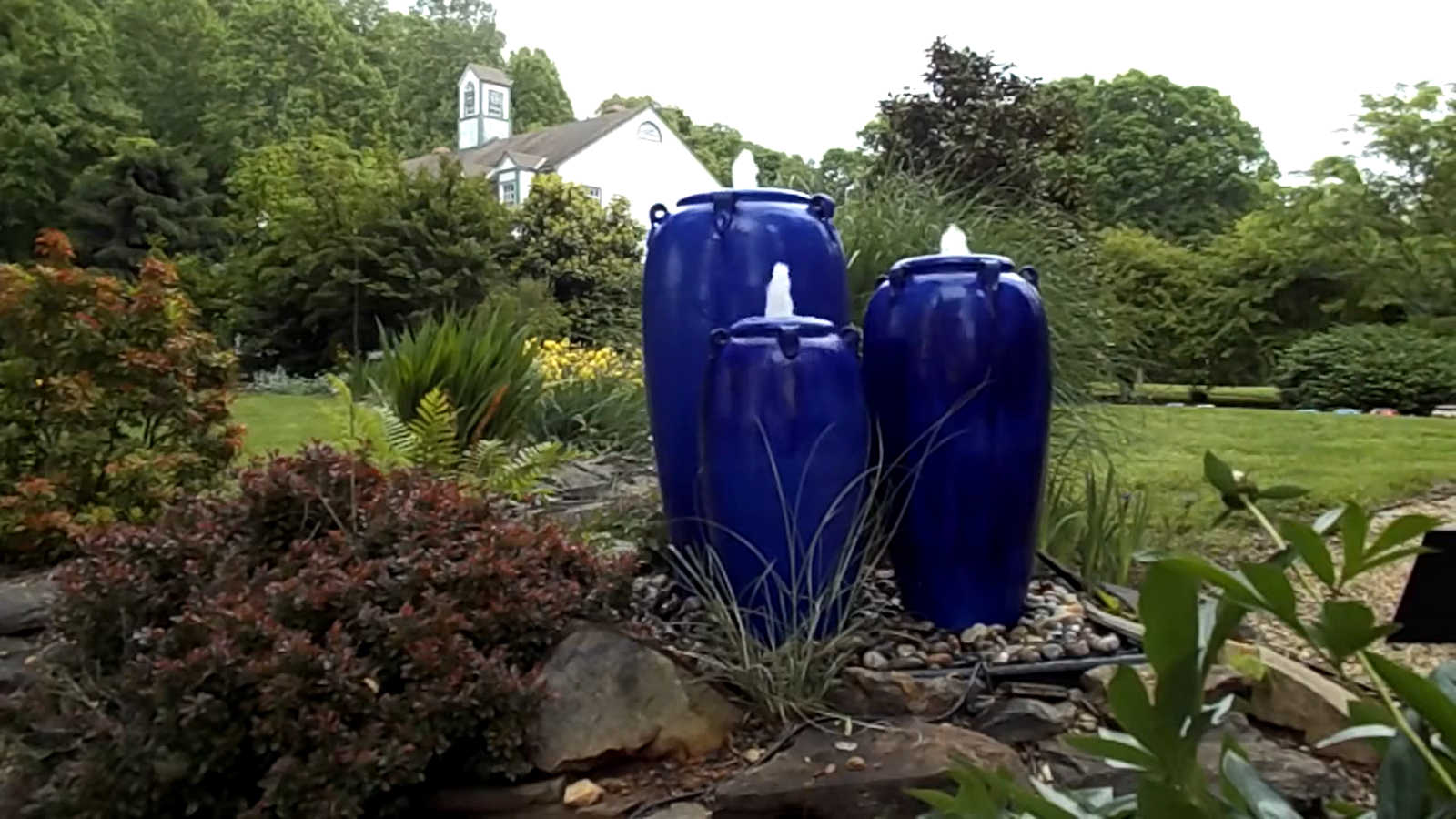[ad_1]
How many times have you heard this remark? “Oh, what a beautiful home!” Frequently the person who says this refers to the green, velvety lawn, for a lawn adds more to the beauty of a home than any other single factor. Many homeowners have admired the lawns of others and wished that his/her own lawn could be made as attractive.
With few exceptions, and those being sections in the extreme North where winters are quite severe, new lawns should be built in the fall. Weeds have then had their annual fling. Moreover, newly seeded grass roots more deeply with cold weather ahead, and most varieties, notably Kentucky Bluegrass, form stools or tiller-out, thus forming a dense sod. Still another advantage is that grass likes cool weather. The warm daytime rains and the cool nights of the fall season are most favorable.
The average lawn is probably not torn up completely so often as every twenty-five years. It, therefore, behooves the homemaker to build well. Extremely rich soil is not necessary; in fact, not even desirable. A good quality of garden soil containing plenty of humus (decaying vegetable matter) will ensure an entirely satisfactory lawn. There should be 4 or 5 inches of such soil, loose and friable, pulverized by frequent raking and working so that the surface is as fine as ashes.

Drainage. It is also well to remember that the permanently good looking lawn is the well drained one. There should be provision for carrying off the surface water so that it is not permitted to stand in puddles and cause souring of the soil, one of the chief reasons for moss. Unless the lawn is sufficiently elevated to provide good drainage, tile should be laid, altho this should not be necessary if the ground has a layer of gravel beneath.
Feeding the New Seed Bed. After a lawn has once been finished to the extent that it is being regularly mowed, it is difficult to get plant food down into the ground, so it should be raked into the soil and allowed to stand for a few days, preferably a week, before the seeding is done. Most lawns are suffering from undernourishment.
Let us assume that the average lawn is mowed twenty times during the spring, summer, and fall. This means the harvesting of twenty grass crops. Suppose the farmer were to harvest twenty crops from his fields, crops which take food from the soil and give nothing in return. His yields would become less and less until finally, the spent soil would no longer produce. So it is with a lawn. Grass needs to be fed or it will starve to death. Again, the farmer may rotate his crops, putting into the ground every three years a legume which helps to store nitrogen in the soil. Furthermore, he plows his fields and gives his soil the benefits of cultivation, and prior to most planting, he uses fertilizer. Contrast this situation with the home lawn which goes on year after year, the soil being undisturbed, no opportunity to get plant food down into it, positively no chance to destroy troublesome weeds by cultivation, and twenty harvests every season to its credit. Small wonder that the lawn for which there is no regular program of fertilization begins gradually to give up the struggle.
Selecting and Sowing Seed. To provide a first-class seedbed and feed it in the most approved manner would be wasted effort if the proper seed of the right varieties were not sowed. A reliable seedsman may be expected to supply a suitable mixture for your locality.
For the average northern lawn, Kentucky Bluegrass should predominate. Other either desirable or at least acceptable varieties that may be included are redtop, Rhode Island Bent, and German Bent, Poa trivialis (particularly good in shade), English Ryegrass, Timothy, and White Clover. For very sandy soils there is no more dependable grass than Chewings Fescue.
Amount of Seed Needed. Above all, the seed should be pure. The total weed content should not exceed 1/4of 1 percent, and still, the cleaner seed is obtainable. A high-grade lawn mixture composed of well-chosen grasses that are free from weeds and chaff should weigh about 13 to 14 ounces to the quart, a rather good test of quality provided Bluegrass is known to predominate. Such seed should be sown 4 pounds to every 1,000 square feet, or, roughly, 1 pound to a space 15 by 14 feet. Seeding should be done on a calm day, from two directions, so as to ensure uniform coverage. For a very large area, it is well to use a mechanical seeder, such as the wheelbarrow type in common use on golf courses. Following the seeding, the ground should be sprinkled with a fine spray and lightly rolled.
Choosing Sod Grass. The easiest and quickest way to get your lawn looking good is buying sod. This option is a lot less work and your lawn will look great in just a few weeks. Cost is the one thing holding most people back. It is more expensive than laying seed but it could be worth it for some cases. One big question is how much does sod cost? If you are looking for a less time-consuming option, sod could be right for you
Subsequent Care. The new grass should be cut regularly and not allowed to grow unduly tall at any time. The clippings may be permitted to fall every other time, for they have fertilizing value. In watering the lawn, whether old or new, it is best to follow Nature’s plan, which is a good soaking once or twice weekly rather than light daily sprinklings. Should the surface of the lawn be inclined to become hard and baked, a light application of finely ground peatmoss will be helpful. It will act as a soil sponge and enable the ground to hold moisture during periods of excessive drouth.
The feeding of the grass may be left to surface applications once, twice, or three times yearly as occasion demands. Such applications should be made in April, if once yearly; in April and early September if twice; and where three are made, June is considered the proper summer month. Lawns containing many trees will require the more frequent feedings.
While the making and maintaining of a first-class lawn is a subject justifying the publication of volumes of data, Mr. Average Home Owner, who is not making lawns a life study but does enjoy the company of a good one, may find in these simple suggestions the way to a good looking, uniform, rich, velvety lawn. As a final word, let us again emphasize the necessity of soil preparation, good seed, and water.
What type of soil do you have?
How to mow a lawn
Lawn Grass Seeds

[ad_2]
Source link








 + Planting String of Watermelon Succulents
+ Planting String of Watermelon Succulents  with Garden Answer
with Garden Answer


